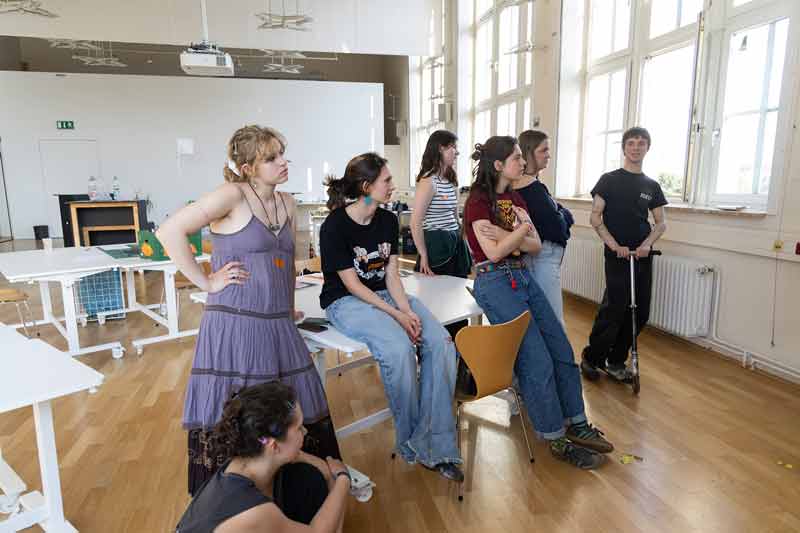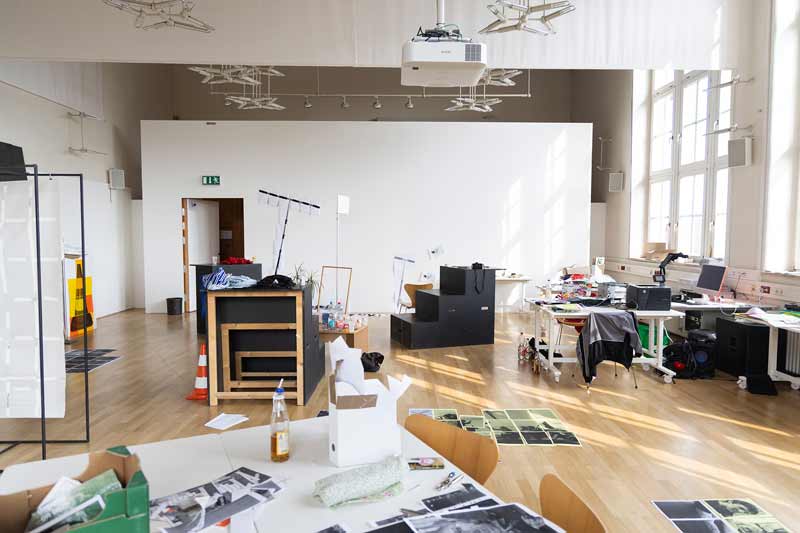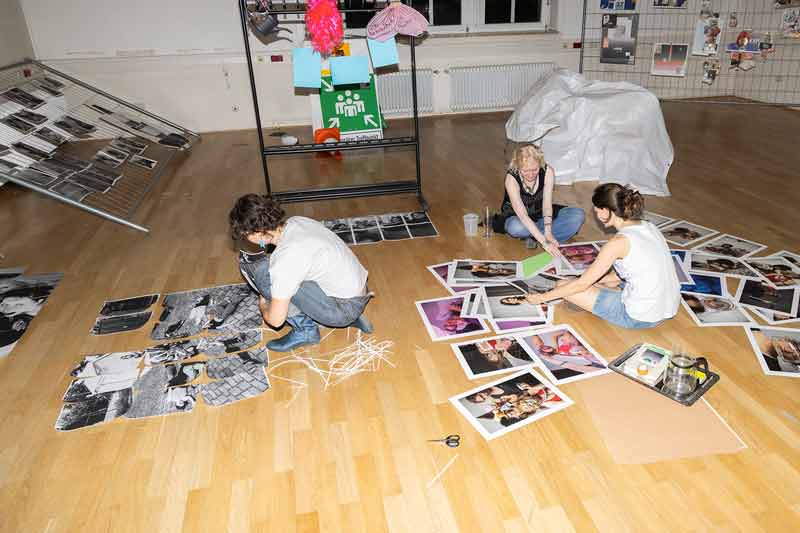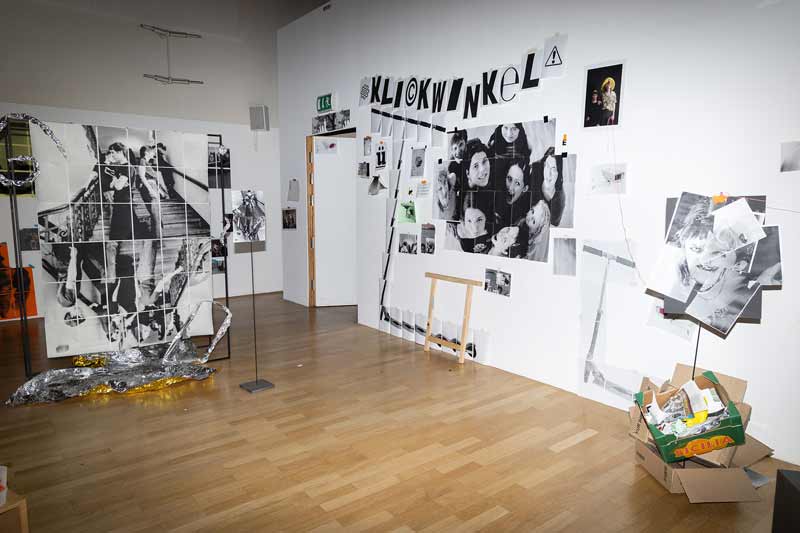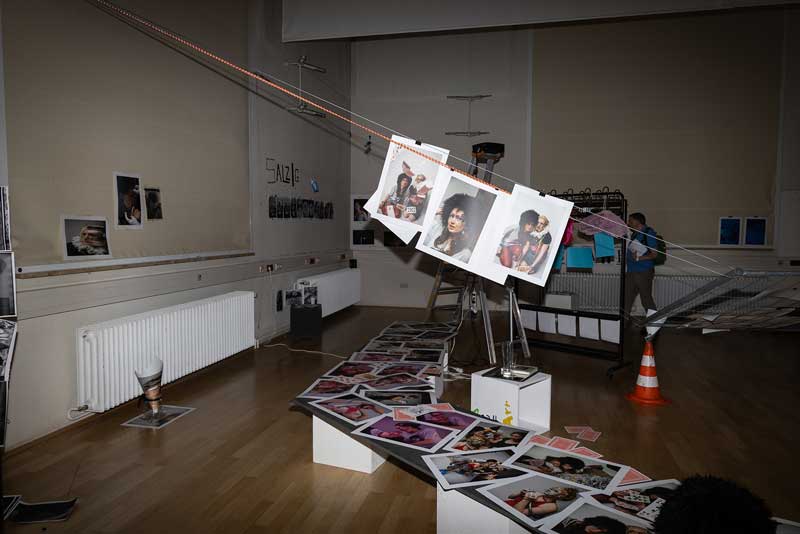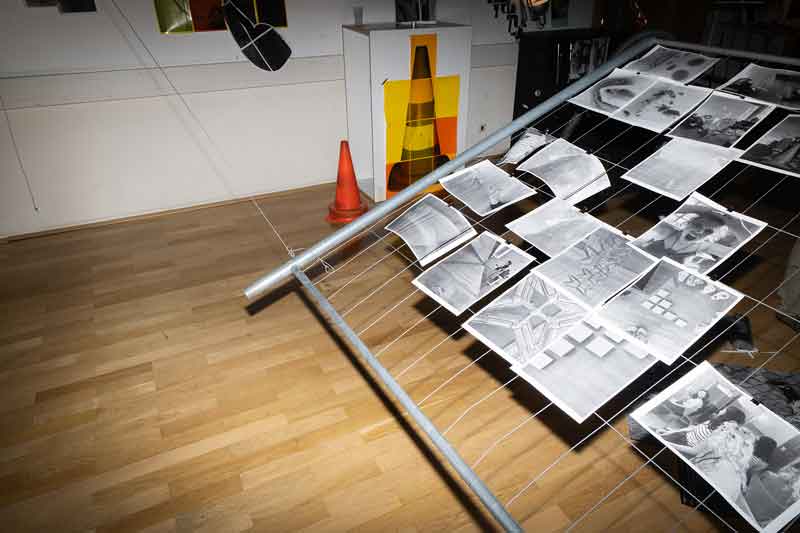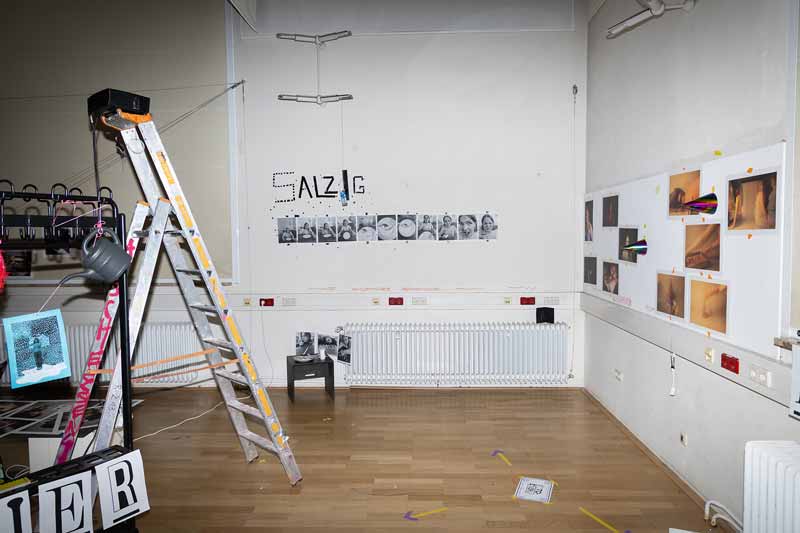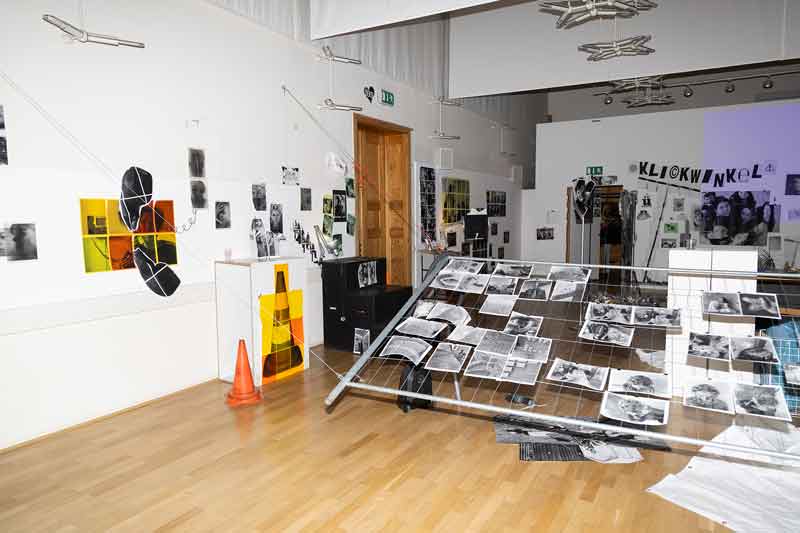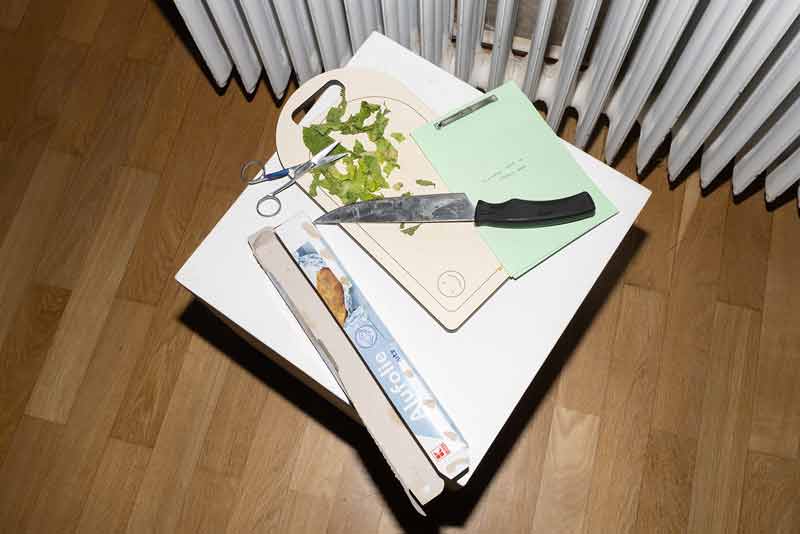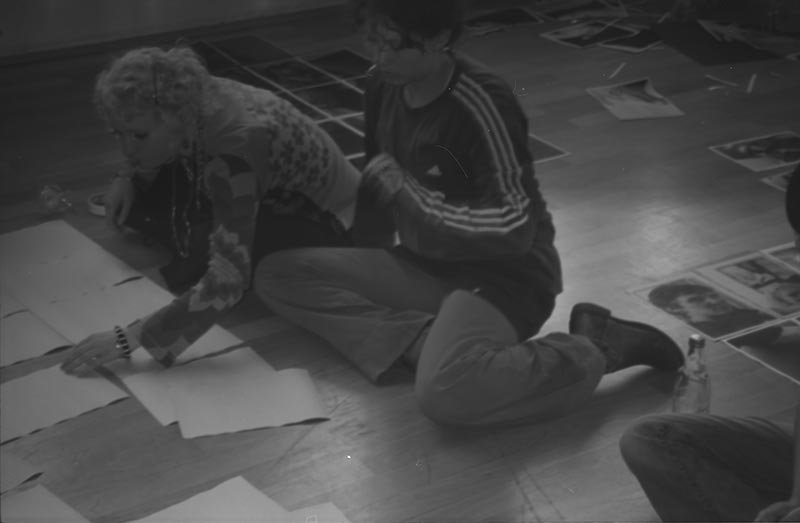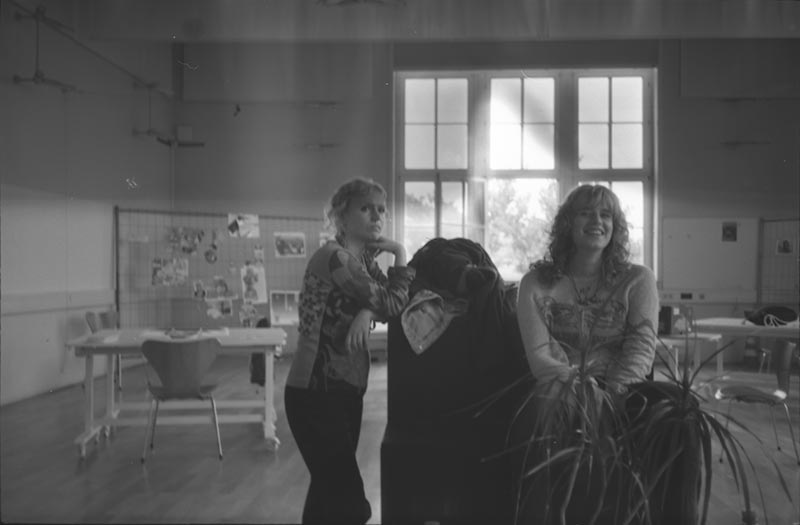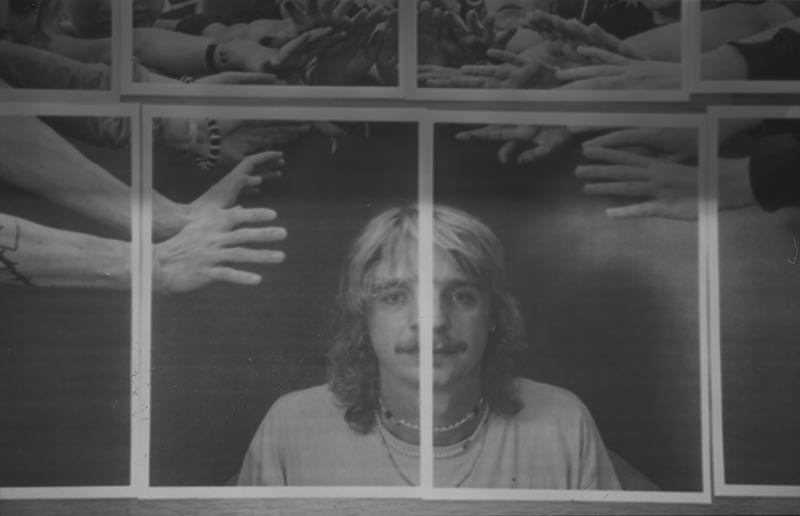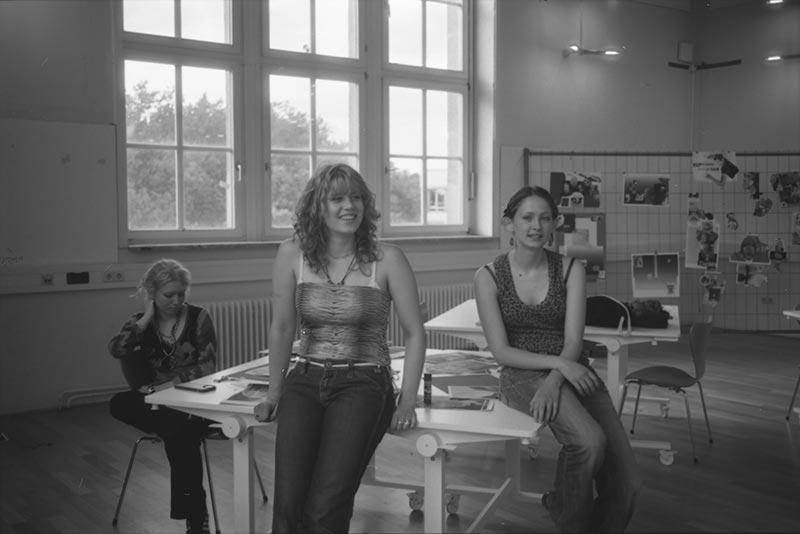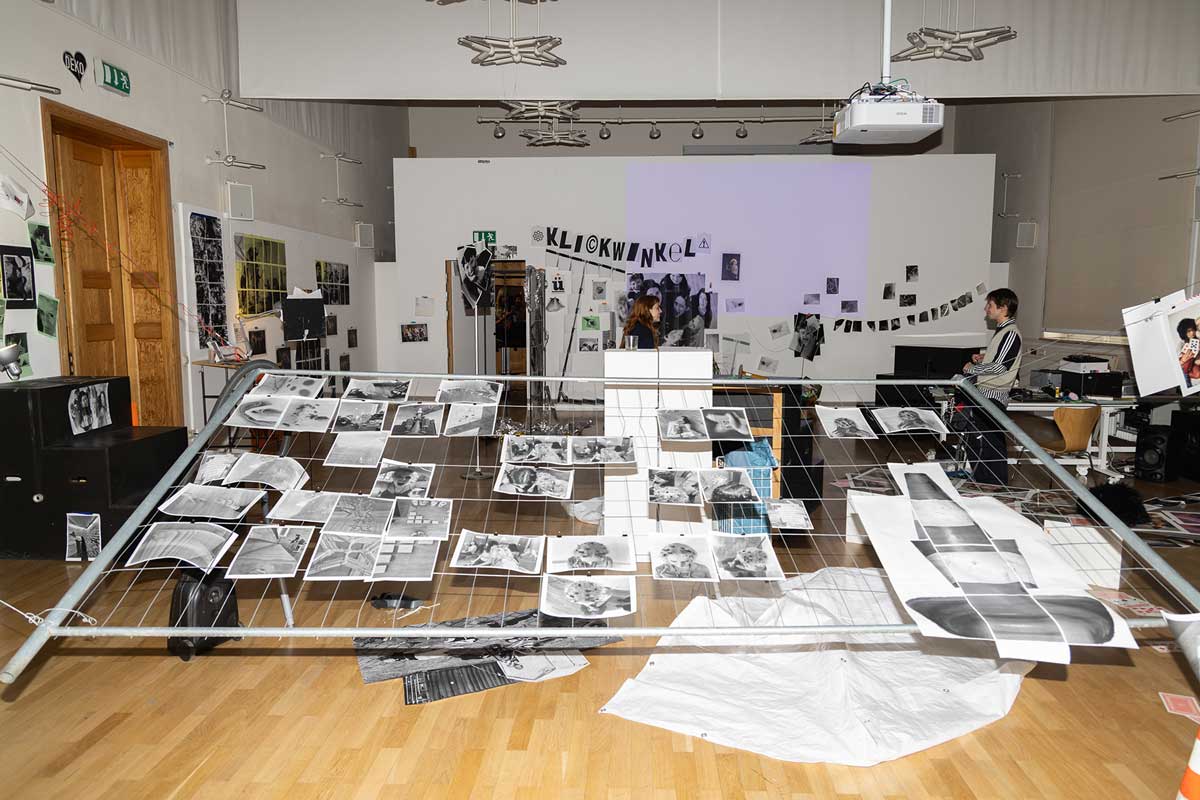
Photos are not just a click – they can fill entire rooms. In our workshop, we explored how images and spaces interact and tell stories. Together, we broke away from the classic picture frame: designing intuitively, printing directly and staging in the room. In addition to studio work, analogue processes were also developed – from black-and-white films to photograms. In this way, we developed photographic narratives on a large and small scale that go far beyond the individual image.
This year, we also set up a video diary booth, where participants could share insights about their process and give honest feedback. In addition, I handed out two analogue cameras, inviting the participants to document the Summer School themselves – creating another layer of collective memory.
Over the course of the week, a kind of capture the flag game developed – except that our flag was a scooter from the Cloud, our student room. Our opponents: the leaders and participants of Edward Scissorhands. Whoever held the scooter at the end of the week won. So the scooter became the centre of attention: sought after, hidden, played around with clues. In the end, we even created a small magazine in which the participants wrote a poem about the scooter. We performed this poem – and with it we unveiled the scooter.
As an introduction to the course, all participants were given the task of creating an A3 collage within an hour that reflected their personality, interests and character traits. At the end of the lesson, the participants presented their collages and introduced themselves to each other.
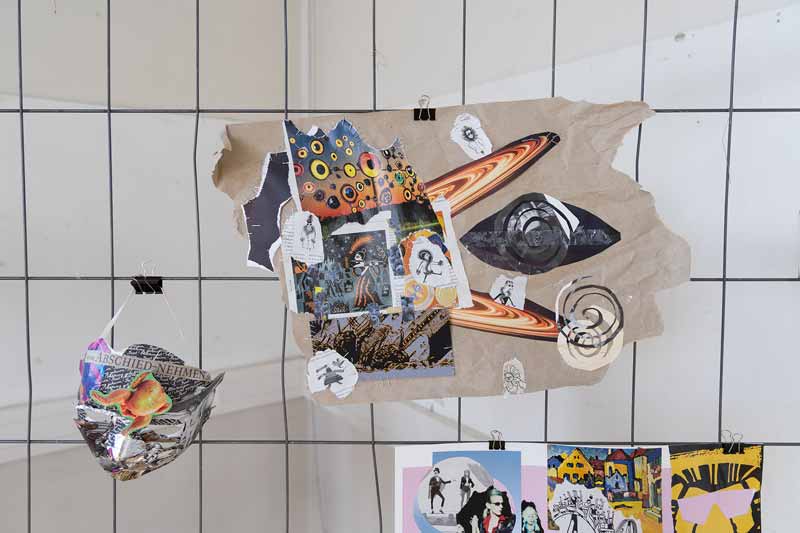

To get straight into photography, we gave the participants the opportunity to overcome their fear of the camera. We gave them my full-frame camera and asked them to take group portraits of our working group. This process included not only the execution itself, but also the instruction, composition and setting of the camera, as well as the choice of location and the idea. The participants learned how to use their photography skills and create their own images. The results were great “family photos”.

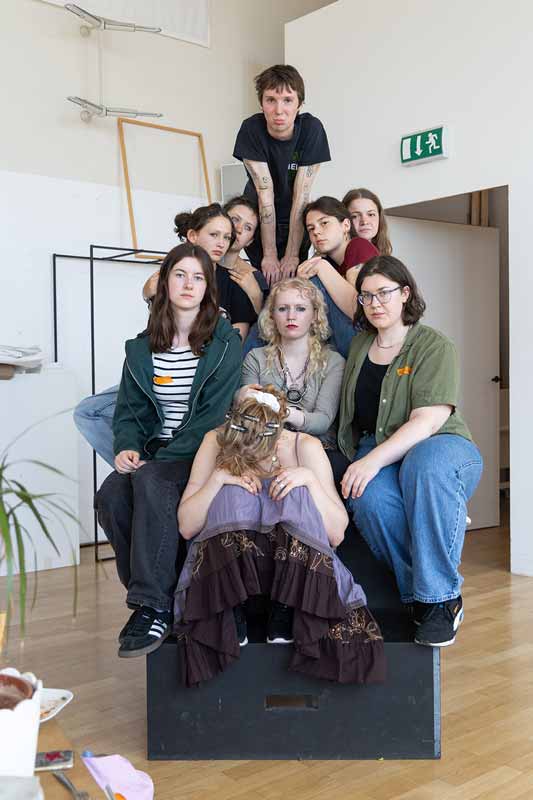
After getting to know each other, we went straight into the practical application of the design principles. We selected eight of these principles and asked the participants to apply them according to their own interpretation. This gave each person the opportunity to develop their creative vision and apply the design principles in their own way. This approach enabled the participants to improve their visual design skills and develop their individual perspectives.

The second day was devoted to experimentation: not just showing photographs, but demonstrating them – as gestures, as language, as a search for a new form. It was only in the discussions afterwards that it became apparent how challenging this openness was. Without boundaries in deconstruction, a polyphonic field of approaches unfolded, radically different, yet connected by a common question: How can an image become space?
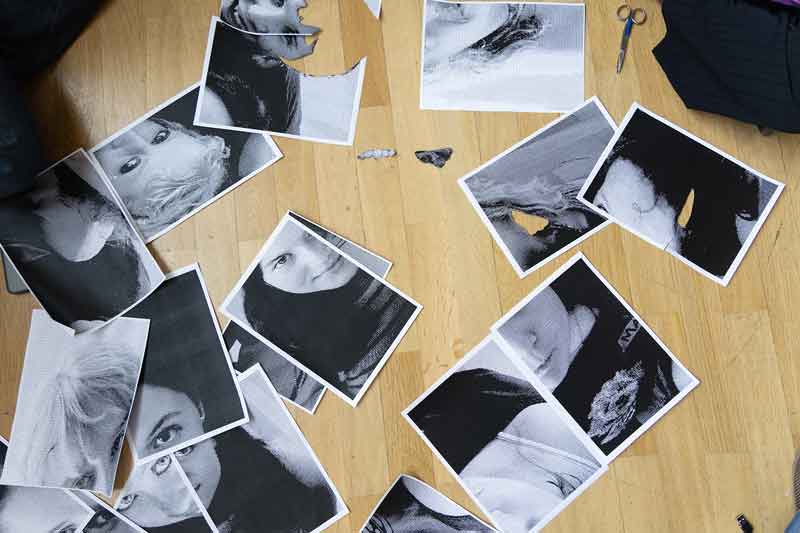
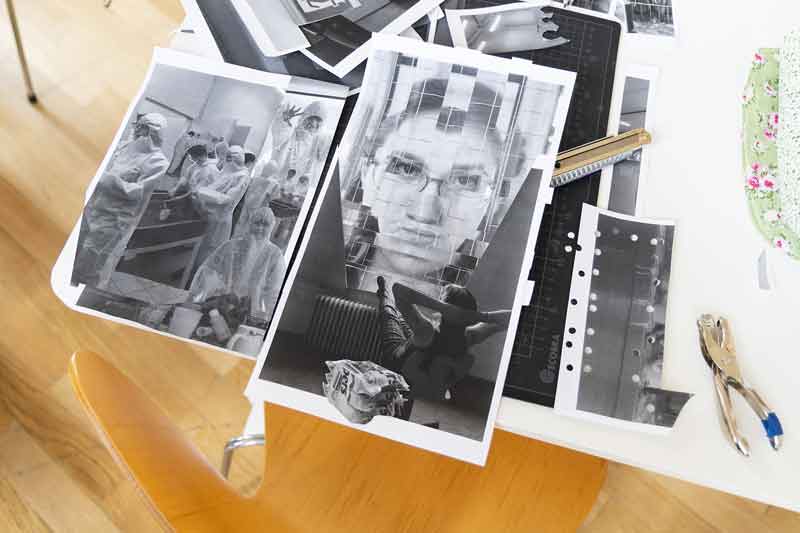
The second task on the second day transformed what had been learned into a narrative form. Small groups formed spontaneously and took on the task of designing with courage and openness – not only for themselves, but also by guiding others. We provided three themes: sweet, salty and spicy. Applied principles and collective energy transformed these impulses into multi-layered photo stories that were more than mere images: small narratives of light, space and encounter.
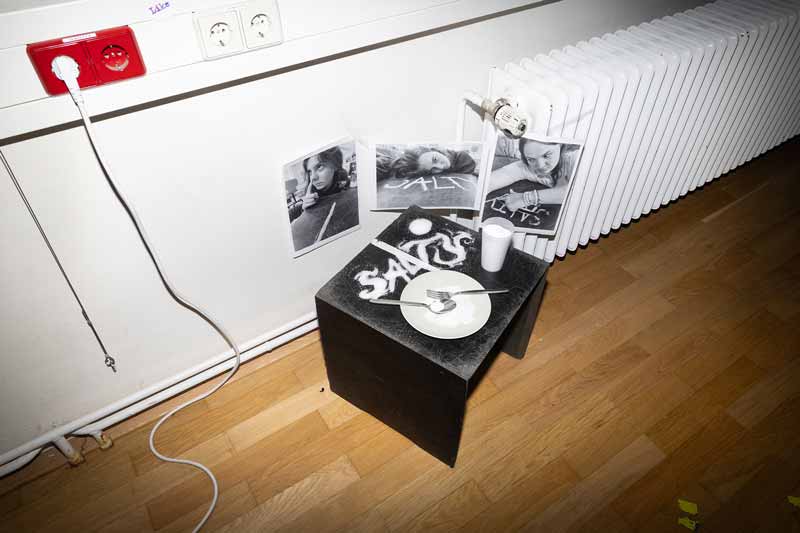
On the third day, we spent the whole day in the photo studio, where we had prepared two different backdrops. A large one, ideal for portraits, group photos and large still lifes, and a smaller one, especially for object photography. Each person was asked to bring as many objects or clothes as possible so that we had the widest possible selection of props to choose from. To take away the participants' fear of the complex studio technology, we set up the lighting and the backdrops so that they could concentrate fully on the composition and the actual photography. This allowed the participants to focus on the creative side of photography and improve their composition and compositional skills.
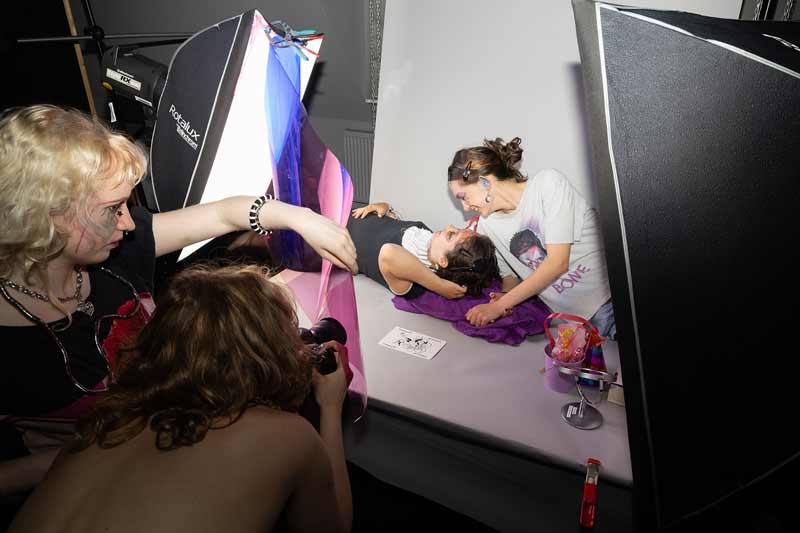
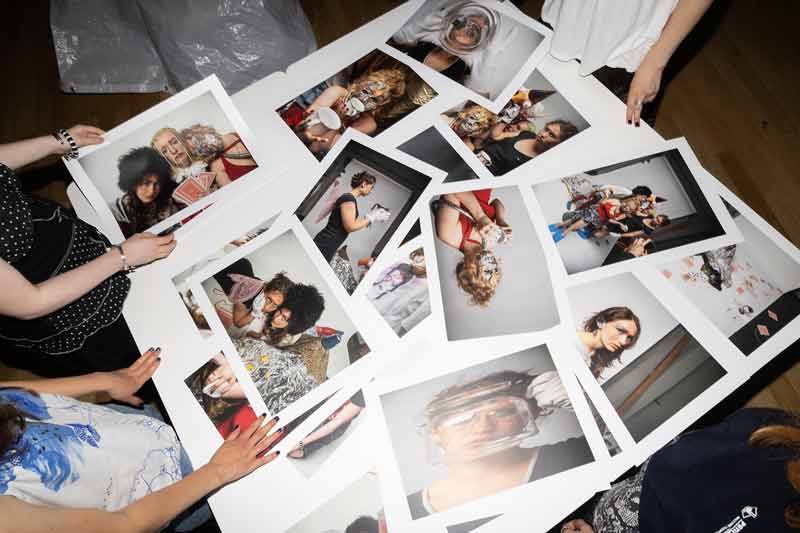
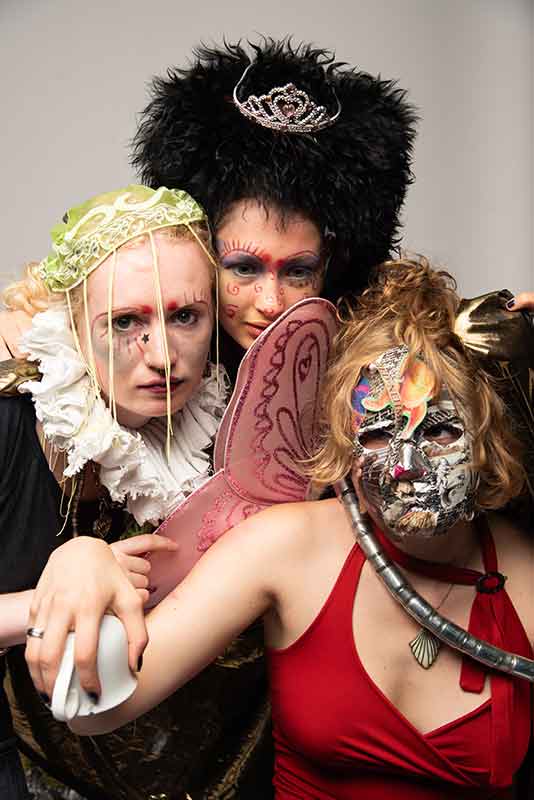
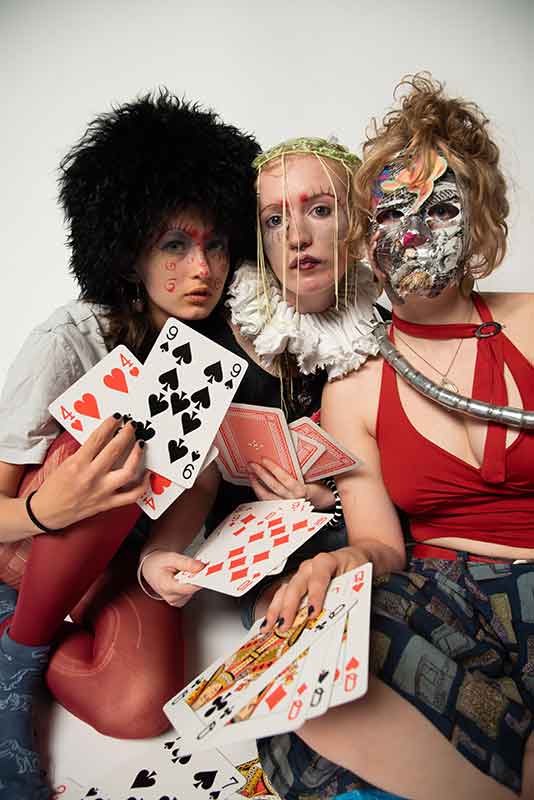
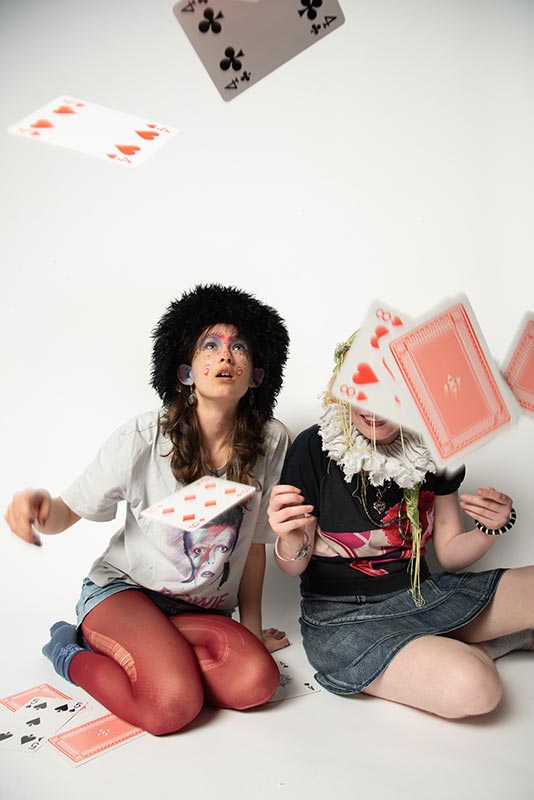
On the fourth day, Jonas and I split up. In small groups, I developed the analogue films we had shot over the past few days, while Jonas worked with the participants in the darkroom to create photograms. The groups rotated so that everyone could experience both processes: the slow process of revealing the images they had captured and the immediate experimentation with light and shadow.
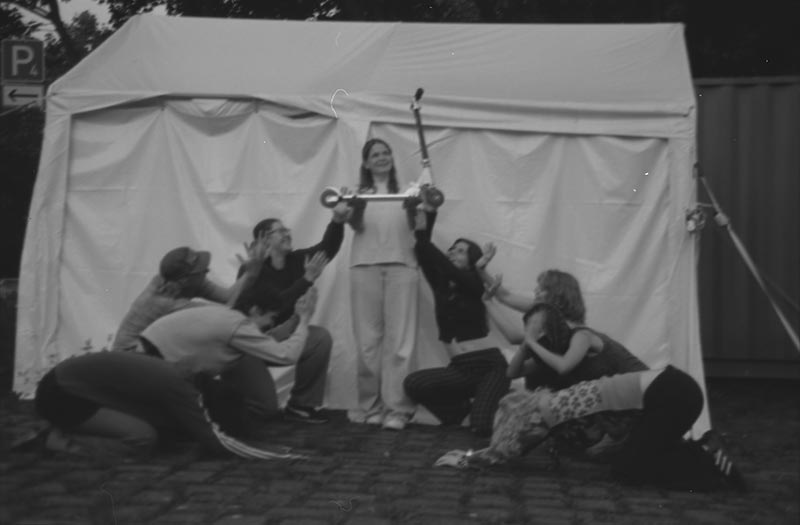

On the last day, we finalised the works we had started, reflected on the exhibition and began to implement it. We opted for a dark room and guided visitors through our installation in a targeted manner – only isolated light sources illuminated the pictures and directed the gaze through the rooms.
The exhibition can be explored interactively. You can navigate through the room using the WASD keys.
